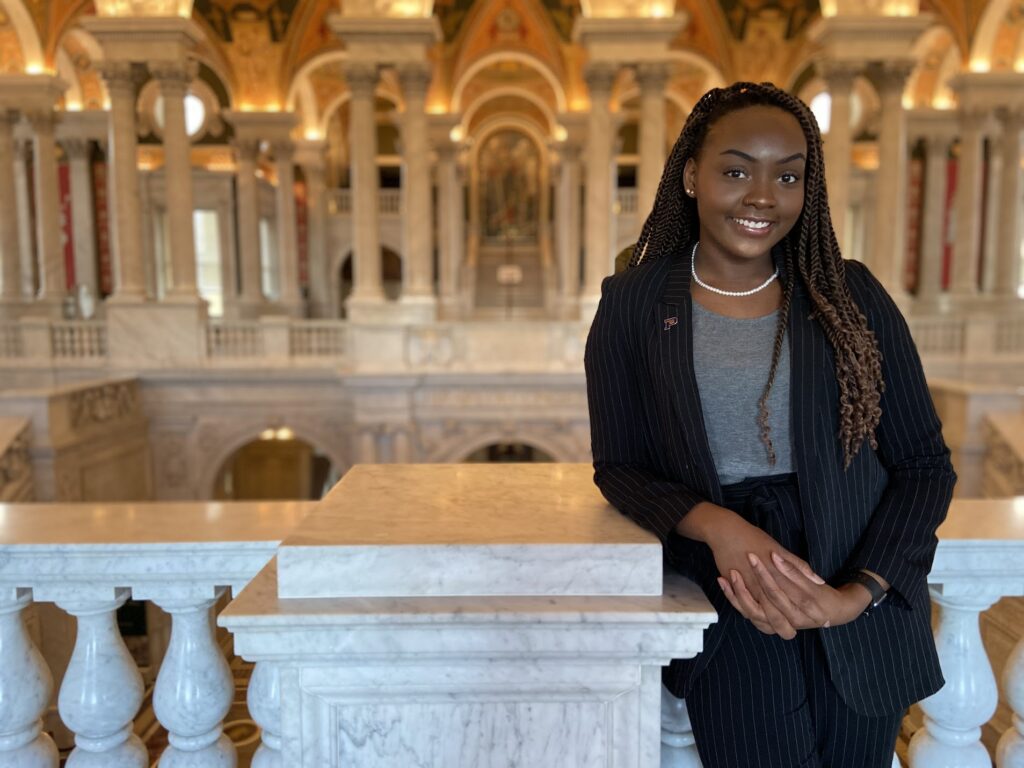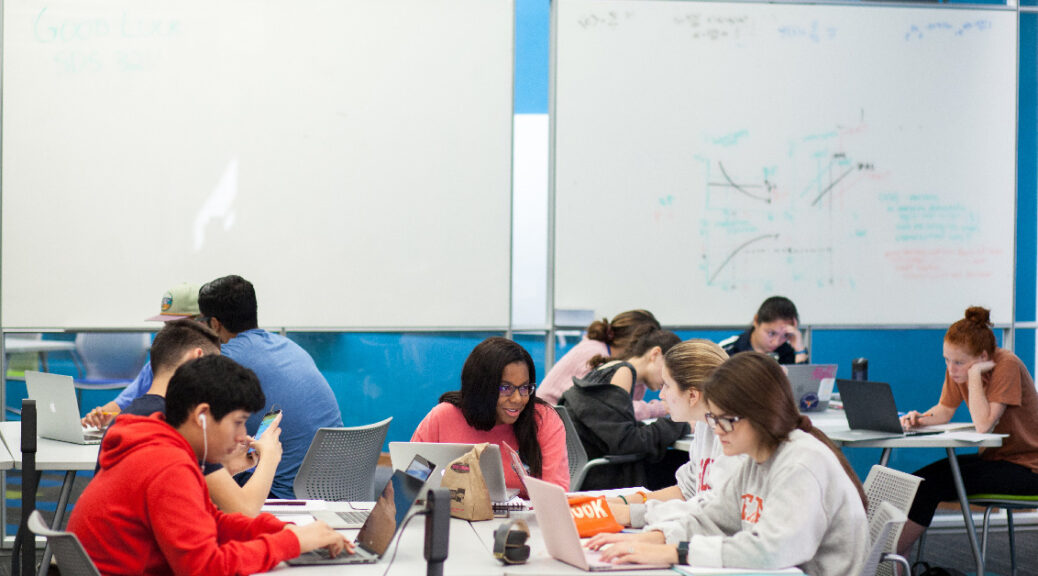The lion’s share of what libraries do requires a fundamental attention to the experience of the researcher, scholar, student, faculty or patron who engages either in-person or online with resources, services, spaces and expertise. That experience of the user can have a profound effect on the quality and efficacy of the work being pursued. With the growth of personal technologies and the development of user-centered design, there’s been a growing movement to place a greater emphasis on user and customer experience in all manner of industry, and libraries have begun to incorporate this strategy into their own operations with the enlistment of User Experience and Content Management experts.
The UT Libraries recently hired its first User Experience Designer, and we sat down with Melody Ethley to learn a bit more about what she will bring to improve the experience of all who enter the Libraries, be that through a door or a browser.
Tex Libris: What’s your background, and how did you get into user experience (UX)?
Melody Ethley: My background is in computer information systems. I was first exposed to User Experience design during my undergrad years. I was still trying to figure out what I’d like to do. After graduation, I had an opportunity to intern at the Library of Congress (LOC) and that was really such an invaluable experience. It was so hands-on, and I learned from a lot of well-versed UX professionals. And I also appreciated having that exposure in the library, which I had never even known about as an option for a career. After my time at LOC, I did some independent work and sought out small business owners to help them develop their websites with a UX focus. I tried to implement my processes while also considering that they don’t really know much about UX. I was eager to continue to follow the path that I was on in pursuing a career in this field and making sure that I was still moving forward while the world was kind of falling apart. I started at UTL in the summer, so I’ve been here for a few months now.

User Experience Designer Melody Ethley
TL: Tell me a little bit about the law.gov project that you worked on at the Library of Congress (LOC). What was it like being involved in a project that big coming fresh out of out of college into this internship?
ME: It was very intimidating, I will say. And didn’t realize how big the project was until I was working on it. I was on a team of about 12 people all doing UX within their own projects at the library. My direct supervisor was the lead experience designer on law.gov at the time. I was brought in as a user researcher and content strategist to help facilitate usability studies and synthesize data from our findings. My integration into the project was very quick, you know. I did a lot of research on how various topics were found on the law.gov landing page, because there was a concern with important content being buried under the menus. And if you have ever visited the law.gov website – like many library websites – there’s a lot of content to sift through. We wanted to figure out how our novice and power users were navigating the Law.gov website and organize the content in a way that everybody could find the information that they needed.
It was a fun project. I got to sit in the Law Library and recruit participants to do our study, which was really interesting. I had to be very strategic in when and how I approached people. At first, it was a little nerve-wracking, because I didn’t want to interrupt their studies, but I was also motivated to gather as many participants as I could. I am a people person, and I’m comfortable with approaching people I don’t know, so it was right up my alley to just go in there and recruit folks for our study.
Later in the project, I inherited the content inventory, which was a big undertaking. I didn’t even realize until after I was finished with this internship that there were over 30,000 items that I helped to capture for the law.gov redesign. I spent weeks revising the existing content inventory and while it was a tedious task, I found a lot of interest in the artifacts that I uncovered while I was working on it. I captured every piece of content that I encountered – any internal and external pages, pdfs, collections, events, you name it. The Type A personality in me had to make sure any and everything was in that spreadsheet. So, at times it was like, ‘oh man, this is a lot, this is a lot.’ But I feel like I was able to kind of truncate it and break it down in a way that wasn’t too overwhelming. And then I realized that I enjoyed working within the realm of content strategy and it became an area that I wanted to explore more about in UX. It’s just another element under the big umbrella of things that you can do in this industry.
TL: Do you think the LOC experience provided any preparation for coming to work at the UT Libraries?
ME: Oh, definitely. I didn’t have that experience working in a library coming into the UX profession. That was one thing that I was excited about when I applied here. My previous experience in a library helped me realize how meaningful my work could be in this space, and the idea of impacting so many people who are striving to reach their educational goals brings me so much purpose. And having that hands-on experience in a larger organization was great, because if I hadn’t had that experience then I would have been mostly relying on my independent projects with the smaller organizations which might not have served me as well in this role. I think that my experience at LOC gave me the reassurance and confidence in my capability to do the work at the caliber that it needs to be done.
TL: Does the approach to UX differ for an organization like a library?
ME: I would say that UX is fairly the same across all industries. Of course, there are nuances, but the core concept and idea remain the same – to deliver a delightful experience to the user. UX in the library is going to be very similar to UX in a private organization. When I think of UX, I think of how I can bring together the needs of the user, the needs of the organization, and the constraints of a specific product that I’m working on. And when I say users, I’m thinking of all my users – so here at the Libraries that is staff, leadership, our patrons. Then how can the organization benefit from the work that I’m doing, even if it’s just in the smallest way? I think all three of those components are what embody UX at its core. And of course, considering that there are nuances in everything it’s difficult for me to pinpoint right now, but I’m sure I will gather these things as I navigate my first few projects.
I’m excited to spread UX around the organization and to inform everybody about all the possibilities of UX. I feel like there’s still kind of like a foggy notion about it, you know. I’m going to be working a lot on the library website and to make sure that our resources and services are useful, and accessible for not only our patrons but for our staff too, because as I see my role, everybody is my user, not just the students – it’s also my colleagues, leadership, and really anybody who has a stake in the Libraries. I think about how I can make each person or group of people’s lives a little bit easier with the work that I do.
TL: That’s good because I generally just make their lives more complicated with what I’m asking them to do – kind of like this right now.
ME: That’s why we’re on a team. Hot and cold.

